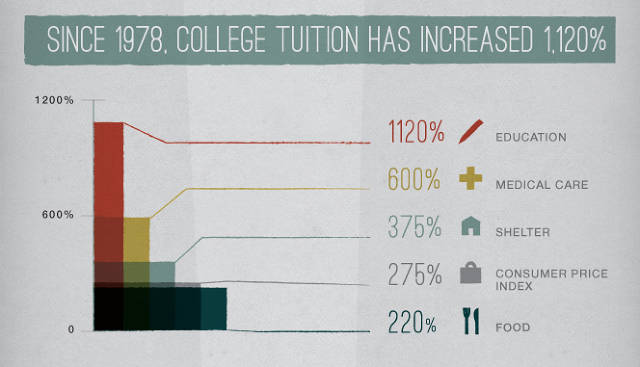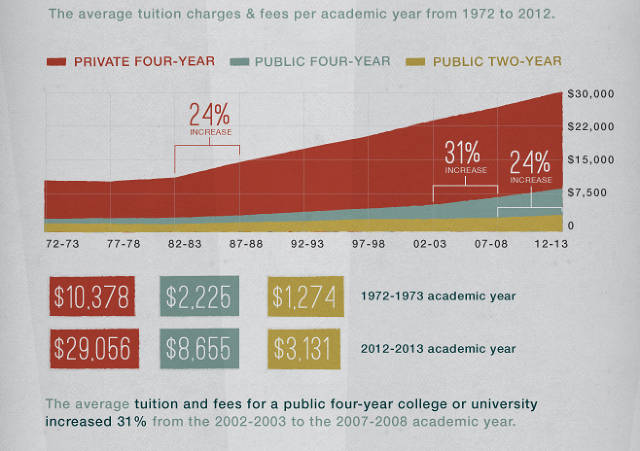
Shared posts
A Real-Life Tricorder Is Now Available For You To Buy And Scan Yourself
TracyAnton Kropp
The Scanadu Scout, which you can use to measure your vital signs by just holding it to your temple for 10 seconds, is now available for $150 on Indiegogo.
Get excited, Star Trek fans and self-tracking enthusiasts: your real-life tricorder is now available for pre-order.
Scanadu, a startup based at the NASA Ames Research Center, has been working on a non-invasive tricorder for over two years. By the end of 2012, the company had a prototype ready--a handheld Yves Behar-designed device that tracks pulse transit time (to measure blood pressure), temperature, ECG, oximetry, heart rate, and breathing rate. A 10 second scan of a person’s temple yields data that has a 99% accuracy rate. That information is automatically sent via Bluetooth to the user’s smartphone.
Today, the Scanadu Scout tricorder is available for pre-order on Indiegogo. It’s a chance for early adopters to check out Scanadu’s technology, and an opportunity for Scanadu to gather some of the data it needs for FDA approval.

The first 1,000 devices ordered on Indiegogo will cost $149, but the price goes up to $199 after that. Originally, Scanadu hoped to price the Scout at $150 across the board, but had to shift because the newest version of the Scout has expanded horsepower (from 8 to 32 bits) and now runs on Micrium, the operation system that NASA uses for Mars sample analysis on the Curiosity rover. Scanadu co-founder Walter De Brouwer, an entrepreneur who first created a backpack-sized tricorder in the 1990s, decided to add in a big horsepower-hogging extra feature to the new Scout: the ability to remotely trigger new algorithms and plug in new sensors (like a spectrometer).
"If we find new algorithms to find relationships between several readings, we can use more of the sensors than we would first activate," says De Brouwer. "If you know a couple of the variables, you could statistically predict that something is going to happen. The more data we have, the more we can also predict, because we’re using data mining at the same time as statistics." One of the Scout’s cornerstone algorithms, for example, allows it to read blood pressure without the cuff that we’re all so used to seeing in doctor’s offices. In the future, Scanadu could discover an algorithm that connects, age, weight, blood pressure, and heart rate with some other variable--and then remotely trigger that relationship.
The Scout doesn’t yet have FDA approval, which is part of the reason for running an Indiegogo campaign. Everyone who pre-orders a Scout has their data sent to a cloud service, where Scanadu will collect it in a big file for the FDA. "It’s going to be a consumer product in the future, but right now we are positioning it as a research tool so that it can be used to finalize the design and collect data to eventually gain regulatory approval," says De Brouwer. "In the end, you have to prove how people are going to use the device, how many times a day, and how they are going to react to the information."
Anyone who opts-in will also gain access to the data of other users who have also elected to share their vitals. People will be able to tweak search parameters (i.e. body temperatures in California) to see only what’s relevant for them. In the future, De Brouwer imagines this could be used for population scanning, kind of like Google Flu Trends with data from real individuals. If your child has flu symptoms, you could one day search the Scout’s stats to see if other kids at her school are also sick.
"I think very soon we will be used to numbers and readings and how to change our behavior almost in real time," says De Brouwer. He believes that separating people from self-tracking devices will be "like taking your email away."
There are no algorithms in place yet to warn users if their vitals are abnormal, but that’s on De Brouwer’s to-do list. And based on feedback from Indiegogo supporters, Scanadu may add in new features before releasing the Scout to consumers.

Scanadu also has another product, the ScanaFlo, that will be submitted for FDA approval in July. That urine testing kit uses a smartphone app to check for an array of issues with the liver, kidney, metabolism, and urinary tract. Peeing on a ScanaFlo paddle allows the device to measure protein, glucose, leukocytes, nitrates, bilirubin, blood, urobilinogen, specific gravity, urine pH--and it checks for pregnancy. Everyone who pre-orders a Scout will get two ScanaFlo paddles.
"We’re all very proud of the design and how it performs. With the smartphone app that we have, it will perform better than the $10,000 machines you can now buy," says De Brouwer. Data from both the Scout and the ScanaFlo will be available on the app.
No word on when the ScanaFlo will go on sale, but Indiegogo backers can expect to receive their Scouts in the first quarter of 2014.
Free Fruit in Silver Spring, If You're Willing to Forage For It
TracyAnton Kropp
"The urban harvest." Ever heard of it? According to a couple of guys who are nuts about foraging, it's basically any place where you can find fruits, veggies, nuts and even (maybe) edible food waste—all for free.
According to NPR's food blog, The Salt, Caleb Phillips and Ethan Welty have mapped thousands of fruit and nut trees, beehives and anything else you could eat that comes out of the ground, on an interactive website called "Falling Fruit."
From the blog:
The duo says they created Falling Fruit essentially to form a community for novice and pro foragers alike. Philips, who is a computer scientist based in the San Francisco Bay Area, says there's value in pulling a carrot from the ground or an apple from a tree to eat.
"If I can apply my skills to help people realize that there is a fruit tree down the street that they can pick, then that's just a simple thing I can do to reconnect people with how food works and get them away from the notion that food is only in a grocery," he says.
Not to be outdone by the thousands of foraging entries in the Portland, OR, area, a couple of areas in Bethesda, Gaithersburg and Silver Spring have tips for free fruit seekers.
Find raspberries of "decent" quality on Colesville Road in Silver Spring, near the Northwest Branch.
And who knew there was a "solid" yield of serviceberries just south of Bethesda Row?
"Beautiful stand of three mature serviceberry trees on a tiny public park," M. Katz wrote.
Check out the map to see if there's any free fruit in your area. If you know of fruiting trees or other edibles for the taking, you can also contribute to the map.
Are video codecs written in JavaScript really the future?
TracyAnton Kropp
Describing it as "the future," Mozilla has been showing off ORBX.js, a video codec roughly comparable to the industry-standard H.264 that can be decoded entirely in JavaScript.
ORBX.js was developed by a company called OTOY. OTOY's major product is Octane Render, a 3D renderer that works exclusively on NVIDIA cards using CUDA. Working with customers including Autodesk, OTOY has developed technology to allow applications such as Autodesk's 3ds Max modelling software to be accessed over the Web without using plugins.
Central to this is the ORBX codec. The codec allows efficient, real-time encoding on GPUs, and can be decoded in JavaScript. The JavaScript decoder works in all modern browsers, both desktop and mobile, though with differences depending on the browser features available.
Read 19 remaining paragraphs | Comments
County: Metro Can't Back Out of Silver Spring Transit Center
A 2008 agreement between Montgomery County and the Washington Metropolitan Area Transit Authority is legally binding and prevents the transit agency from backing out of plans for Metro to operate the beleaguered Silver Spring Transit Center once it opens, county officials said Wednesday.
Accelerating the schedule for fixing the transit center's structural problems depends in great part on WMATA's willingness to cooperate, county officials told the Montgomery County Council at a briefing on Wednesday.
WMATA does not appear ready to cooperate. In an April 12 letter to the county, the agency's deputy general manager of operations said Metro would not operate and maintain the transit center. The letter later said WMATA "would operate Metrobus service from the facility when the County advises the facility is ready to operate"—language county officials called confusing. (See the attached PDF for the full text of the letter.)
County Attorney Mark Hansen told the council the September 2008 memorandum of understanding between the county and WMATA is legally binding and WMATA cannot abandon the project.
Tim Firestine, the county's chief administrative officer, called the letter "pure legal posturing by WMATA." His words did little to allay council members' concerns about the latest in a series of problems associated with the transit center.
The center was scheduled to open this summer after years of delays. But inspectors found cracks in the facility's foundation. An independent review of the $120 million structure deemed it unsafe and unusable without major repairs.
The review, by independent firm KCE Engineering, found issues with the center's concrete, girders, columns, support beams and—most disturbing to inspectors—an absence of support cabling on one level of the three-tiered facility.
Haven't been following along? Get caught up on the Silver Spring Transit Center.
The council pressed the executive branch Wednesday about how soon the transit center could open.
David Dise, the director of the county's Department of General Services, said he couldn't give a definite schedule until a remediation plan is in place. A plan should be ready in a month, he said.
Dise described a "collaborative effort" between the county government, contractors and others to minimize design and review time and send the plan to the permitting stage as quickly as possible. The county hopes to begin repairs this summer.
WMATA has declined invitations to participate in the collaborative meetings, Dise said. According to the memorandum of understanding, the county must submit the remediation plan to WMATA, which then has 15 days to review and submit comments. A failure to comment results in approval, Dise said.
"None of this should be difficult," Dise said. "We simply need their attention."
WMATA was not represented at the council briefing.
The county is constructing the center, but WMATA is responsible for owning and operating the transit center once it's done, Dise said.
"I can finish it. I can't open it. That's their job," he said.
The next council briefing on the transit center is scheduled for June 18.
Fenton Street Market Opens Saturday
TracyAnton Kropp
The Fenton Street Market opens again for the season this Saturday, April 27, on Silver Spring's Veterans Plaza. Hours are 10 a.m. to 4 p.m.
Some special highlights for opening day include a scavenger hunt challenge, youth baseball and softball league registration, a pop-up community cafe, and Q&A time with representatives from the new Silver Spring Library from 1-3 p.m.
You can find out more details on the market's website and see a map of the vendors who will be there.
April 27 also happens to be Neighborday. What do you like about your neighbors in Silver Spring? Tell us in the comments.
When Answering Email Is A Career Setback
Tracy"Knowledge workers are bad at working, ...If you're a violinist, you'll practice until your fingertips get calluses. If you're a knowledge worker, you try to get to inbox zero."
It's minimally rewarding to get lost in a sea of email--both for your psyche and your career development. Here's what to do about it.
Cal Newport caught our attention with one insight: Don't follow your passion.
So how about another: "Knowledge workers are bad at working."
Why? You probably already have an idea: because we're mired in tasks. Like Newport says, if you're a chess player, you'll spend thousands of hours dissecting games of better players. If you're a violinist, you'll practice until your fingertips get calluses. If you're a knowledge worker, you try to get to inbox zero.
Are there any rules?
Let's go back to the violinist. It's tempting to make the conclusion that musician do things like nutso music camps to inch closer to the 10,000 hours that Malcolm Gladwell said is the secret of success. Let's avoid that.
As Frans Johansson observes in The Click Moment, the 10,000-hour approach only really works in fixed environments. In tennis, chess, and classical music, the rules are reasonably set, so over enough time, a talented and assiduous student can technically master them.
But most of the world isn't so fixed. The start of the Twilight series literally came to the as-yet-unpublished Stephanie Meyer in a dream. Then, of course, there's startups: The Internet collectively went green with envy when Summly--whose founder Nick D'Aloisio is a ripe 17 years old--got acquired by Yahoo for $30 million.
If there is a pattern, what is it?
Similar to productivity master Bob Pozen's ethos of step-by-step optionality--where you maximize your chances for the next, better gig by developing in-demand skills at your present job--Newport espouses what he calls career capital theory. By making stuff that people want--not necessarily by following your passion--you make wealth.
So how do you build career capital? Newport wrote a whole book about it. But, to begin, give yourself enough time to immerse yourself in your big projects--that's where you'll be able to do the work that stretches your skillset and creates new value for your team.
And if you feel like you'd never have to do that, you might want to talk to your boss--and put away your phone.
How do you give yourself a situation where you can do your best work? Tell us in the comments.
[Image: Flickr user Vincent Lock]
    
|
The World Is Becoming A More Addictive Place
TracyCool post by one of the IxD 2013 speakers
The world has become harder to resist. Products are getting better at giving people what they want and – for the most part – that has been good thing. Yet, the historical trend-line shows products are also becoming more habit-forming.
All products alleviate customers’ pain. Even products used to gain pleasure must first generate desire, a unique form of discomfort, which the customer will pay to satiate.
MANUFACTURING DESIRE
The engine driving the evolution of marketing and advertising for the past 125 years has been the increasing speed with which companies adapt products to better meet customer needs.
The Age of Scarcity (prehistory – 1930s): For the majority of human history, the basic necessities of life were expensive and rare. Human populations growth was mediated by the limitation of resources. Keynes formulation of Say’s law[1] was that “supply creates its own demand” and in a time of scarcity, goods sold quickly to those who could afford them. Though commercial communication traces back thousands of years, the term “marketing” only made its debut in 1884. Prior to the industrial revolution, products attracted consumers mostly by being available. The limited supply meant high prices and only the well-off had any discretionary spending power.
The Age of Capacity – (1930’s – 2000): Starting just before the Great Depression, manufacturing production began exceeding demand. This was a massive problem for companies who feared making goods no one would buy. Industry called upon men like Edward Bernays, Sigmund Freud’s nephew, to create demand through “public relations,” a term he coined as a substitute for the word propaganda, which had negative connotations after its use by the Germans in WWII.
Bernays spawned the rise of modern Madison Avenue advertising through mass communication channels like radio. Copying Bernays’ successful tactics, companies sought to identify and connect consumer’s hidden psychological needs to commodity goods like tobacco, soap, and cereal. During the golden age of branding, companies found they could create demand and increase consumption by giving their goods unique identities and for the first time, create associations in the consumer’s mind. Though their product remained largely unchanged and indistinguishable from one another, companies found altering their packaging, coupled with repetitious messaging, was enough to influence purchasing behaviors.
During the later half of the 20th century, the falling cost of creating new products in smaller batches meant companies could alter goods slightly to appeal to previously underserved niches. Marketers also learned to segment consumers through various demographic and psychographic characteristics, with various degrees of success and scientific rigor. The focus group helped brands build new offerings to satisfy what consumers could tell them they wanted.
The Age of Contingency – (2000 – present): Prior to the widespread use of the Internet, marketing had been dominated by products, which changed relatively little. Companies generally repackaged and rebranded products as “line extensions” of the main brand. However, with the explosion of interactive technologies, companies could tailor products to each and every user. For the first time, products could alleviate the customer’s pain in a uniquely personalized way.
PERFECT CONTINGENCY
Vast amounts of individualized data, transferred at unprecedented speeds to readily accessible, always-on devices, define the age of how we interact with the products that define our lives. Technology products today adapt to the user, constructing themselves in real-time. For example, no one’s Twitter stream or Facebook timeline is like anyone else’s.
But in the Age of Contingency, it is not only the product that adapts to the user. The user also adapts to the product by forming new behavioral and usage habits.
Two parties, the product and the user, change together towards “perfect contingency,” a state of nearly instantaneous adaptation to one another. The more the user habituates to using the product, the more useful and pleasurable the product becomes. This is why the world is becoming a more addictive place.
This post originally appeared at nirandfar.com
Charting The Insanely High (And Rapidly Rising) Cost Of College
Tracy31% increase while I was in college, niiiiice
Students are being saddled with enormous amounts of debt just to get a degree, and how much it costs is going way up. This infographic shows just how much.
One of the cornerstones of the American dream is that a first-rate education be available to anyone who seeks it out. But in 2013, what is a first-rate education worth, and how much does it cost?
Since 1978, the cost of attending college in America has increased 1,120 percent. And as you can see in this infrographic the financial model for higher education looks broken, as tuition costs are rising faster than inflation. This infographic breaks down the small fortunes that students are investing in their academic lives--implicitly asking why it has to be this way, and explicitly advising future students on how to minimize their debt.

The graphic comes on the heels of data saying that half of all employed college graduates have jobs that don’t require college degrees. Now, if you believe that a college education is a path toward wealth acquisition or a tool for class mobility, then this is a problem. The other view is that the goal of a liberal arts education is to have an educated electorate. In either case, the system is failing if it prices the masses out of attendance (or burdens them with lifelong debt). And considering that, according to the graphic, the average graduate’s debt totals $27,500, it’s no wonder that pundits are likening student loans to the housing bubble.

It bears reminding that the graphic was created by CourseSmart, a provider of digital textbooks. Clearly, CourseSmart is in a position to benefit from pointing out how students can save money (say, with digital course materials as opposed to traditional ones). But that shouldn’t mitigate the value of the graphic, which demands we pay attention to classroom costs. We’re already paying the bill.
The full infographic is below:

[ILLUSTRATION: Education via Shutterstock]
    
|
Decaying Russian Buildings Transformed into Character Art
In his ongoing street art series “The Living Wall,” Russian artist Nikita Nomerz brings life to decrepit buildings in Russia by painting faces on them. Nomerz travels extensively around Russia and makes an effort to paint a character in each place he visits. He talks about his art in this interview with Global Street Art.
I paint in the street, in public spaces, but I do not position myself as an invader of the city or a destroyer. I position myself as a creator. With my street art work, I fill the urban emptiness. I am inspired by the process of painting, city, people, music, movies and art by other artists. All this is interesting: it pushes the creation of art works.
via Telegraph, Global Street Art, Environmental Graffiti, Digg









